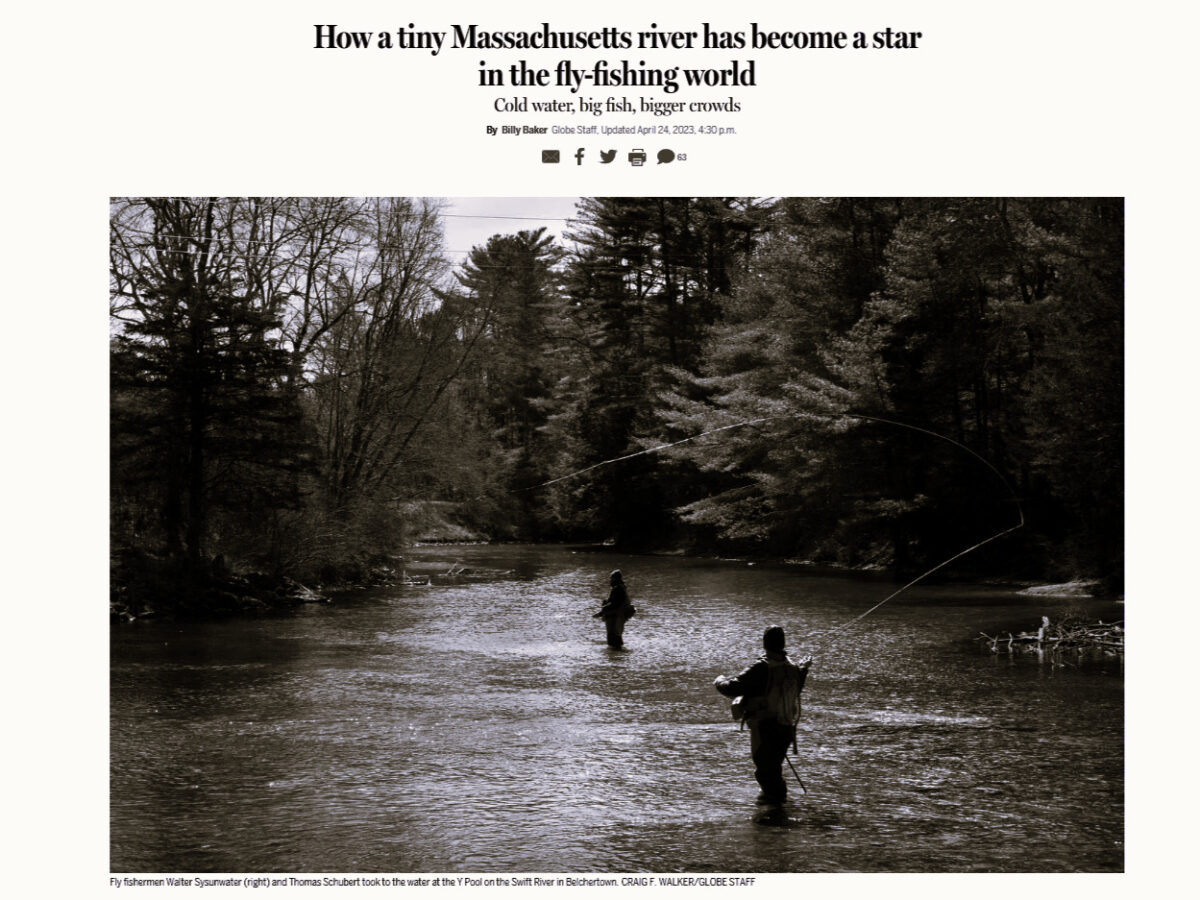
Last week, The Boston Globe published “How a tiny Massachusetts river has become a star in the fly-fishing world: Cold water, big fish, bigger crowds.” And now I have a few things to say.
First: That title. Whew. I got quite a bit of reading done without having to break the paywall.
Second: A lot of my family, friends, and acquaintances here in New England must still read the Globe. I wish I could catch fish with the same frequency I landed this link via email and text.
Third: I’m all for a major Boston newspaper’s spot-burning.
Before I go any further, here is a link to the article in question.
So, why am I all for spot-burning? Well, there are two primary reasons why I am not phased by the publicity given to the Swift River. First and foremost, everyone knows about the Swift. I can’t imagine that a Boston newspaper’s coverage of the river is going to impact the already less-than-comfortable conditions. The fish aren’t going to get smarter. The parking lot isn’t going to overflow more. The company isn’t going to be… well, maybe I shouldn’t jinx it.
Second, I’ve seen how added stress can actually break a river and facilitate it’s rebirth.
I’m not wishing any unnecessary pain on the fish, the ecosystem, or even my fellow New England anglers. But if we’re honest, there are a lot of things going on at the Swift River that we often rail against. Dams, stocked fish, and overcrowding are all things that conservation-minded anglers scoff at when they are superficially detrimental. As long as there are big fish to be had within a convenient drive, those convictions begin to soften a bit.
Perhaps I’m salty because I’ve had to talk about this article as much as I have over the past week. Honestly, I’m not as cantankerous or amped-up as I may be intimating.
But I have seen a river like the Swift hit a point where it was loved and used to death. Even in my 25 years of fly fishing, this particular mid-Atlantic stream went from being a hog-factory to a wasteland to a legitimate wild trout paradise. What transpired? The consistent application of conservation. Isn’t that the plan?
Once more, this overthinking of a relatively benign article may be the allergy-season headache response to responding to “you ever fish there” ad nauseum. But that too is a necessary consequence of being known. Anglers know the Swift is full of fish. My people know that I’m full of fish-writing and the like. I can’t complain that the parking lot off of route 9 is crowded. I can’t complain that people see me as their fly fishing touchpoint.
But I guess I do complain, from time to time. All that said, it is a good article. Even if the title is long.
